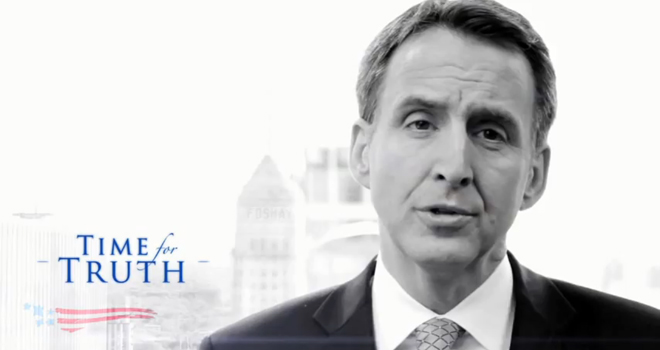After positioning himself as the candidate of tough choices, Tim Pawlenty drew widespread ridicule from experts across the political spectrum on Wednesday for his wildly optimistic economic plan.
Pawlenty unveiled his platform at a speech in Chicago, a combination of tax reforms and budget cuts that he said would yield an explosive economic recovery. The centerpiece of his proposal was setting a goal of 5% economic growth per year for a decade.
“Growing at 5% a year, rather than the current level of 1.8%, would net us millions of new jobs,” he said. “Trillions of dollars in new wealth. Put us on a path to saving our entitlement programs. And balance the federal budget.”
But a group of former CBO directors, who are chosen by Congress to analyze the budget from a nonpartisan perspective, are lambasting the number, saying it’s completely out of line with any mainstream assessment of the American economy.
“The trend growth rate is not going to be 5% in the United States,” Douglas Holtz-Eakin, director of the CBO under President Bush and a top GOP advisor, told TPM. “The market just doesn’t support that. It just doesn’t.”
While a brief spurt of high growth is not uncommon coming out of a deep recession, sustained 5% growth appears a bridge too far. Pawlenty cited expansion periods under Reagan and Clinton as models, but neither president achieved comparable numbers — in fact from 1980-2000 there was only one time in which growth surpassed 5% at all, a 7.2% boom in 1984 that immediately leveled off the next year.
“It’s impossible” Robert Reischauer, former CBO director under Presidents Bush Sr. and Clinton and current president of the Urban Institute, told TPM. “You get growth because of investment, an increased labor force, a rise in human capital, and innovation. Add all those components together and they don’t sum up to 5% given what the labor force is going to be and the investment possibilities are.”
Rudolph Penner, CBO director under Ronald Reagan and a longtime budget hawk, said that high growth for an extended stretch coming out of a deep recession was not impossible, but took strong exception with Pawlenty’s rhetoric on the deficit. In his speech, Pawlenty asked Congress to grant him the authority to freeze the budget and take greater control over government spending.
“As an example, cutting just 1% of overall federal spending for 6 consecutive years would balance the federal budget by 2017,” he said.
But Penner warns that the biggest driver of the deficit is rapid growth in mandatory spending to help pay for the retiring Baby Boom generation, meaning even slight overall reductions would lead to massive sacrifices for seniors.
“It’s totally unrealistic,” he said. “It sounds great: 1% a year, that’s trivial isn’t it? But the trouble is underlying it you have health costs growing like crazy and you have Social Security growing fairly rapidly under current law. To get a 1% total cut is just extraordinarily difficult to do.”
To put in perspective, even Paul Ryan’s budget, which includes major long term cuts to Medicare, wouldn’t balance the budget until 2040. Rather than rolling back Medicare spending, it indexes its growth to inflation.
Note: This story has been updated.









